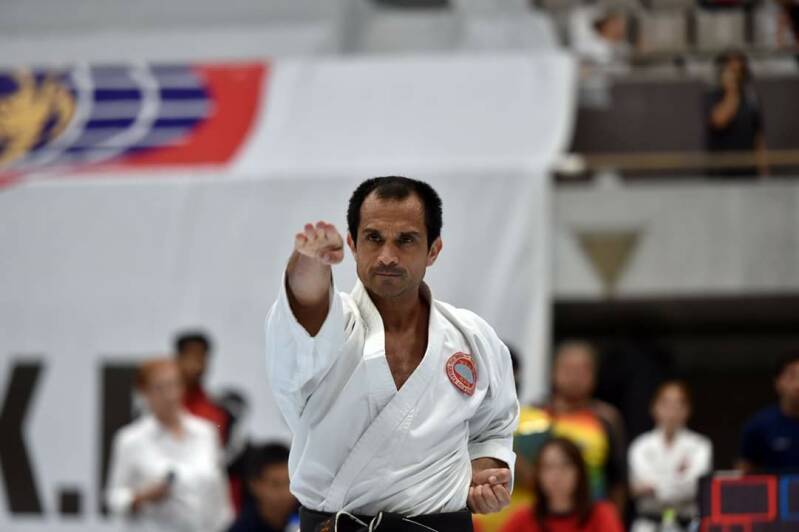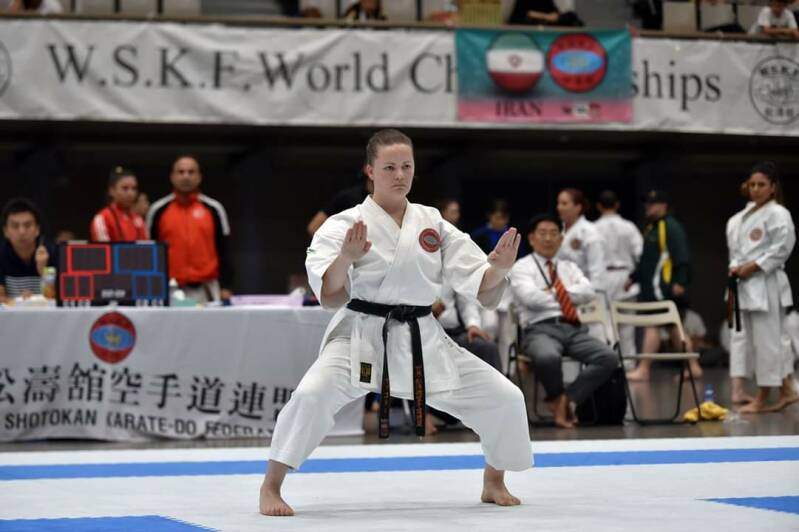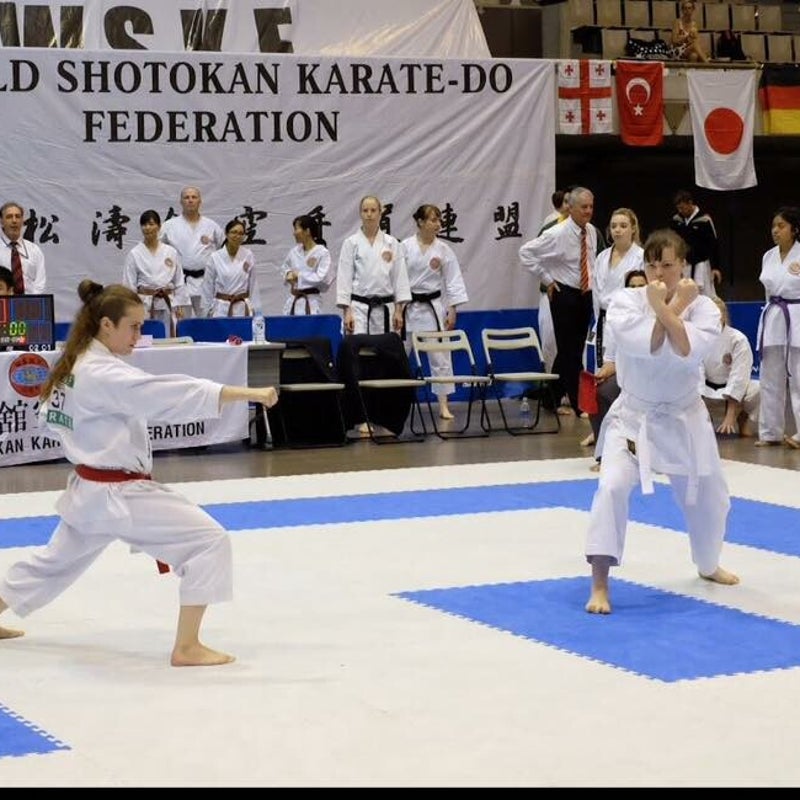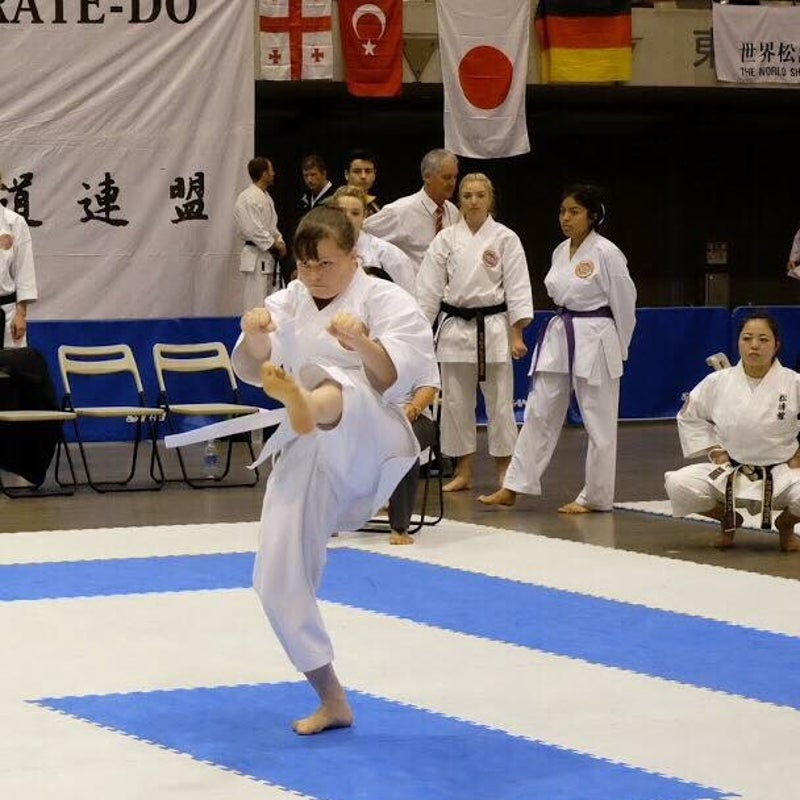Kata


Kata
Kata is a Japanese word meaning "form". Kata is an essential partner in Karate training. It refers to detailed arranged patterns of structured movements when training. This system of training incorporates practical combat techniques developed and refined over centuries and contains the fundamental principles and concepts of Karate - stances, foot position, punches, kicks, blocks and holds. Kata is the building block in developing bio mechanics, muscle memory, proper breathing and mindfulness.
Kata provides a structured process to shake imperfections and improve skills. By repeating a movement consistently the correct technique is gradually mastered to perfect the movements being executed - ingrain it to muscle memory until it happens by reflex. Systematic practice does not mean permanently rigid - It is a framework to providing continual feedback to follow the quest for improvement and capability.
KIHON practice essential to KATA
KATA is KUMITE
In Shotokan Karate there are 26 Katas:

Heian
Created relatively recently, the Heian katas were originally called Pinan from the Okinawan pronunciation of the Chinese word for safety. When introduced to Japan, Master Funakoshi opted to use the Japanese pronunciation Heian. Considered basic kata for beginning students.
- Heian Shodan– (peaceful mind, first level)
- Heian Nidan– (peaceful mind, second level)
- Heian Sandan– (peaceful mind, third level)
- Heian Yondan– (peaceful mind, fourth level)
- Heian Godan– (peaceful mind, fifth level)
Tekki
Originally known in Okinawa as Naihanchi, the katas were renamed by Master Funakoshi upon its introduction to Japan to reflect the strength exhibited with kiba-dachi. Rich in fighting techniques, the Tekki group of katas offer multiple applications of close combat techniques.
- Tekki Shodan– (iron horse riding, first level)
- Tekki Nidan– (iron horse riding, second level)
- Tekki Sandan– (iron horse riding, third level)
Advanced Katas
- Bassai-Dai (to penetrate a fortress – big)
The strong techniques of this kata emphasises hip movement. Some resemble a battering ram being used against fortress walls. - Bassai-Sho(to penetrate a fortress – small)
This kata was derived from Bassai-Dai. Has a similar performance line. - Kanku-Dai (to view the sky – big)
Most of the elements of the Heian Kata were derived from this kata. The first movement in this kata views the sky, which symbolizes the universe and shows your opponent that you are unarmed. - Kanku-Sho (to view the sky – small)
Kanku Sho was created from Kanku Dai. The movements and performance line are similar. - Hangetsu (half moon)
This kata received its name from its principal stance, hangetsu dachi (half moon stance). - Gojushiho-Sho (fifty four steps – big)
This kata is one of the most advance kata of Shotokan. Master Funakoshi called it hotaku (knocking of a woodpecker). - Gojyushiho-Dai (fifty four steps – small)
This is a smaller version of Goju Shi Ho Dai. It is also one of the most advanced kata of Shotokan. - Empi (flying swallow)
The quick up and down movements of this kata are reminiscent of a fling swallow. Enpi is one of the oldest kata in Shotokan. Its former name was Wanshu. - Jion (love and goodness)
It uses basic stances and techniques. It is one of the most traditional katas in Shotokan. - Jitte (ten hands)
The goal of this kata is to teach the student to fight against ten opponents. This is a strong kata, similar to jion and Jiin. - Meikyo (bright mirror)
The first movements of this kata suggest the smoothing of water as calm and even like a mirror. - Nijyushiho (twenty-four steps)
The movements in this kata resemble waves breaking on a cliff. The former name of this kata was ni sei shi. - Wankan (king and crown)
Wankan is the shortest kata in Shotokan. - Gankaku (crane on a rock)
The main stance in this kata (tsuruashi dachi) resembles a crane ready to strike at its prey. The movements are supposed to simulate a fight in the narrow alleyways of Okinawa. The former name of this kata was Chinto. - So-chin (strength and calm)
The name of this kata comes from its stance (sochin dachi), a strong, rooted stance. The purpose of this kata is to teach defense against a stick. Its former name was Hakko. - Chinte (rare hand)
Chinte has a lot of circular and roundhouse techniques. These are rare and are not typical of the shortest distance between two points concept of Shotokan. - Unsu (cloud hands)
Unsu has several techniques that symbolise parting the clouds with open hands. It is also one of the most advanced kata of Shotokan.
"Team Kata" Tutorial
| Sessions | Tuesday | Wednesday | Friday | Saturday |
|---|---|---|---|---|
| Karate Advance | 6 pm OnSite | 7 pm OnLine | 6 pm OnLine | 11 am OnSite |






























